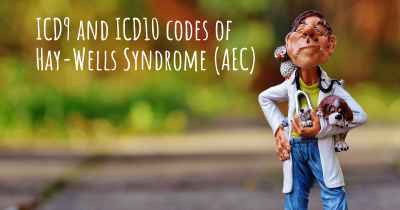What are the latest advances in Hay-Wells Syndrome (AEC)?
Here you can see the latest advances and discoveries made regarding Hay-Wells Syndrome (AEC).

Hay-Wells syndrome, also known as Ankyloblepharon-Ectodermal Defects-Cleft Lip/Palate (AEC) syndrome, is a rare genetic disorder that affects multiple systems in the body. It is characterized by a combination of abnormalities including skin, hair, teeth, and facial features. While there is no cure for Hay-Wells syndrome, ongoing research and medical advancements have led to a better understanding of the condition and improved management strategies for affected individuals.
One of the key areas of advancement in Hay-Wells syndrome is in the field of genetics. Identification of the specific genetic mutations associated with the syndrome has allowed for more accurate diagnosis and genetic counseling. Researchers have discovered that Hay-Wells syndrome is caused by mutations in the TP63 gene, which plays a crucial role in the development of various tissues and organs. Understanding the genetic basis of the syndrome has paved the way for targeted therapies and potential gene therapies in the future.
Another significant advance in Hay-Wells syndrome is in the management of the dermatological manifestations. Ankyloblepharon, a condition where the eyelids are partially fused, is a common feature of the syndrome. Surgical interventions, such as eyelid separation procedures, have been refined to improve the functional and cosmetic outcomes for affected individuals. Additionally, advancements in wound care and skin grafting techniques have enhanced the management of skin erosions and blistering associated with the syndrome.
Dental abnormalities are another hallmark of Hay-Wells syndrome. Dental professionals now have a better understanding of the oral manifestations and can provide appropriate dental care. Early intervention, including orthodontic treatment and dental implants, can help improve the function and aesthetics of the teeth in affected individuals. Regular dental check-ups and preventive measures are essential to maintain oral health and prevent complications.
The management of cleft lip and palate, which is often present in individuals with Hay-Wells syndrome, has also seen advancements. Surgical techniques for cleft repair have evolved, leading to improved outcomes and reduced complications. Multidisciplinary teams involving plastic surgeons, orthodontists, and speech therapists work together to provide comprehensive care for individuals with cleft lip and palate, addressing both functional and aesthetic concerns.
Additionally, there has been progress in the understanding and management of other associated features of Hay-Wells syndrome. For instance, hearing loss, which can occur due to abnormalities in the middle ear, can now be diagnosed early through newborn hearing screening programs. This allows for timely intervention, such as the use of hearing aids or cochlear implants, to improve hearing outcomes. Furthermore, speech therapy and interventions for feeding difficulties are available to support affected individuals in their development.
In conclusion, ongoing research and medical advancements have significantly contributed to the understanding and management of Hay-Wells syndrome. Genetic discoveries have provided insights into the underlying causes of the syndrome, potentially opening doors for future targeted therapies. Refinements in surgical techniques, dental care, and multidisciplinary approaches have improved the quality of life for individuals with Hay-Wells syndrome. While there is still much to learn and accomplish, these advances offer hope for better outcomes and support for those affected by this rare genetic disorder.








